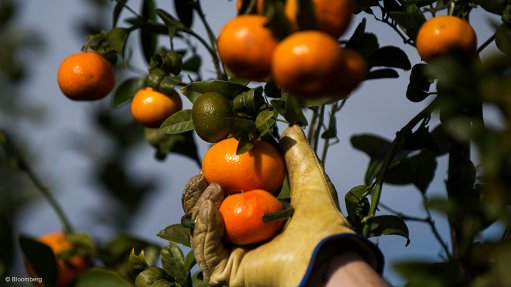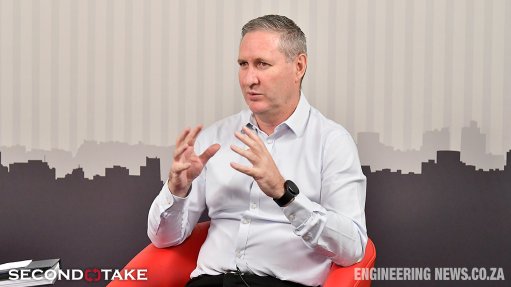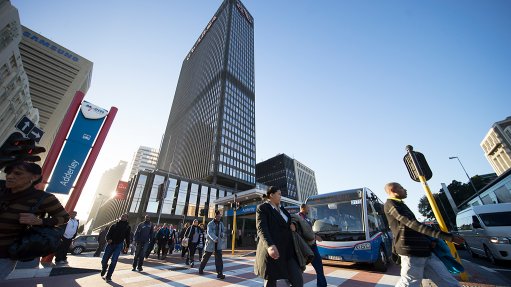Peru continues to develop socioeconomically
The South American country of Peru has been one of the leading socioeconomic development successes of the past 25 years.
Just over a decade ago, the country’s poverty rate was almost 60%. By 2009, it had fallen to 33.5%, then to 30.8% in 2010, 27.8% in 2011, 25.8% in 2012 and 23.9% last year. The Peruvian government expects the poverty rate to fall to 15% in 2016. In comparison, South Africa had a poverty rate of 45.5% in 2011 (which appears to be the most recent date for which data is available), compared with 57% in 2006.
One of the key factors credited for this success by Peruvians was the creation of a National Pact, which has ensured consistency in key policies despite changes in government. “This was adopted by all Peru’s political parties,” explains outgoing Peruvian ambassador to South Africa Daúl Matute-Mejía. “This sets the minimum standards of governance for the country. Since it was brought into effect, the country has grown continually.”
The accord lists 29 policies that must be followed. “The first is to strengthen democracy and the ‘state of law’,” he elucidates. “The other policies cover economic and social development, and so on, and all the parties agree with these policies and enforce them. When a country is a true democracy, all people have some opportunity to develop themselves, in different ways.”
Peru’s current success is rooted in a series of radical economic reforms undertaken some 20 years ago. “In the early 1990s, we had 220 State-owned companies in many sectors, including mining and fishing,” he reports. “We privatised all of them. That freed up the economy (private-sector companies can’t compete with subsidised State companies) and led to a great increase in investment – in mining, hydrocarbons, fishing – everywhere, in fact.” The country also abolished exchange control.
This investment has been both domestic and foreign. And, among the foreign investors, there have been companies from South Africa or with strong South African links. These include SAB Miller, Gold Fields, BHP Billiton and Anglo American. Today, South African investment in Peru exceeds $8-billion.
In addition, Peru has signed many free trade agreements (FTAs) and these have greatly stimulated its trade. The country now has FTAs with the European Union, China, Japan, South Korea and Thailand, as well as with a number of Latin American countries and the US. “Previously, Peru was the beneficiary of something like [the African Growth and Opportunity Act, which grants more liberal, but not totally free, access to US markets for African countries, including South Africa] – the Andean Trade Preference Act (ATPA). But free trade is much better than the ATPA,” states the ambassador.
“We want our industry to be competitive! Protectionism prevents competitiveness,” he affirms. “We are creating, every day, jobs for people in the private sector. The State can’t create sustainable jobs.”
Last year, Peru had a population of 30.38-million, a gross domestic product (GDP) of $202.3-billion, a GDP growth rate of 5.8% and an inflation rate of 2.8%. Between 2000 and 2009, the country grew by 4.6%, then by 8.5% in 2010, 6.5% in 2011 and 6% in 2012. (World Bank figures). The country’s GDP growth for this year is forecast to be 4.6%, owing to the euro crisis and the deceleration of the Chinese economy.
Peru experienced private investment of $8.4-billion in 2002. This rose to $9.2-billion in 2003, $10.5-billion in 2004, $12.3-billion in 2005 and $15.1-billion in 2006. Except for 2009, the trend has remained one of ever-greater investment each year. Thus, the figure came to $19.5-billion in 2007, $27.3-billion in 2008, falling to $22.4-billion in 2009 and then rising again to $29.5-billion in 2010 and $34.6-billion in 2012. It is estimated that investment last year amounted to $45.3-billion and the forecast for this year is $50.4-billion. (These figures are from ProInversión, Peru’s private investment promotion agency.)
Comments
Press Office
Announcements
What's On
Subscribe to improve your user experience...
Option 1 (equivalent of R125 a month):
Receive a weekly copy of Creamer Media's Engineering News & Mining Weekly magazine
(print copy for those in South Africa and e-magazine for those outside of South Africa)
Receive daily email newsletters
Access to full search results
Access archive of magazine back copies
Access to Projects in Progress
Access to ONE Research Report of your choice in PDF format
Option 2 (equivalent of R375 a month):
All benefits from Option 1
PLUS
Access to Creamer Media's Research Channel Africa for ALL Research Reports, in PDF format, on various industrial and mining sectors
including Electricity; Water; Energy Transition; Hydrogen; Roads, Rail and Ports; Coal; Gold; Platinum; Battery Metals; etc.
Already a subscriber?
Forgotten your password?
Receive weekly copy of Creamer Media's Engineering News & Mining Weekly magazine (print copy for those in South Africa and e-magazine for those outside of South Africa)
➕
Recieve daily email newsletters
➕
Access to full search results
➕
Access archive of magazine back copies
➕
Access to Projects in Progress
➕
Access to ONE Research Report of your choice in PDF format
RESEARCH CHANNEL AFRICA
R4500 (equivalent of R375 a month)
SUBSCRIBEAll benefits from Option 1
➕
Access to Creamer Media's Research Channel Africa for ALL Research Reports on various industrial and mining sectors, in PDF format, including on:
Electricity
➕
Water
➕
Energy Transition
➕
Hydrogen
➕
Roads, Rail and Ports
➕
Coal
➕
Gold
➕
Platinum
➕
Battery Metals
➕
etc.
Receive all benefits from Option 1 or Option 2 delivered to numerous people at your company
➕
Multiple User names and Passwords for simultaneous log-ins
➕
Intranet integration access to all in your organisation

















